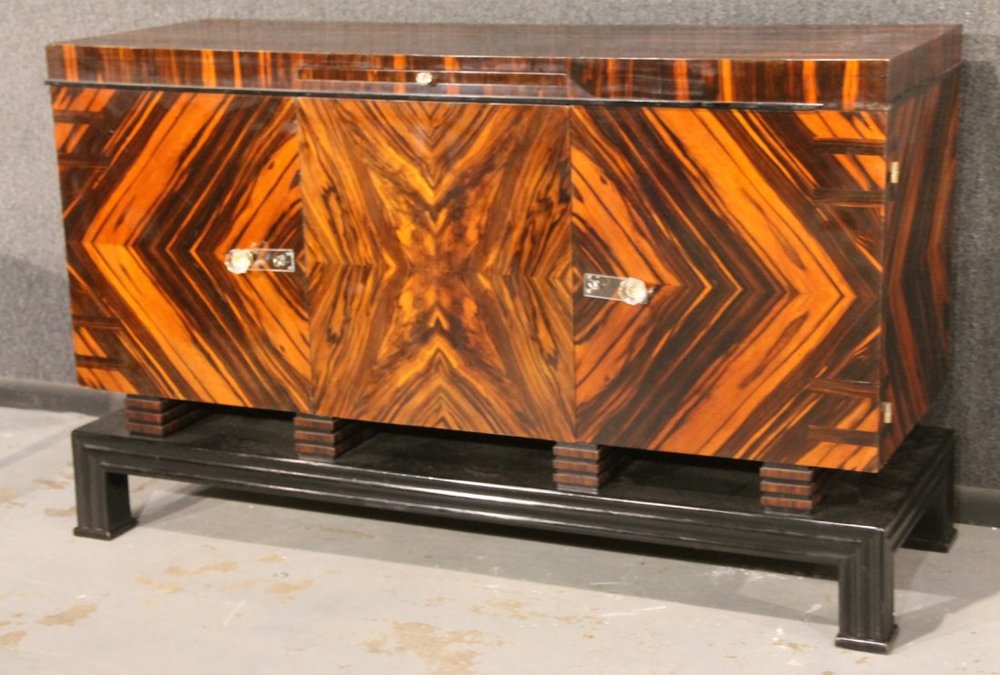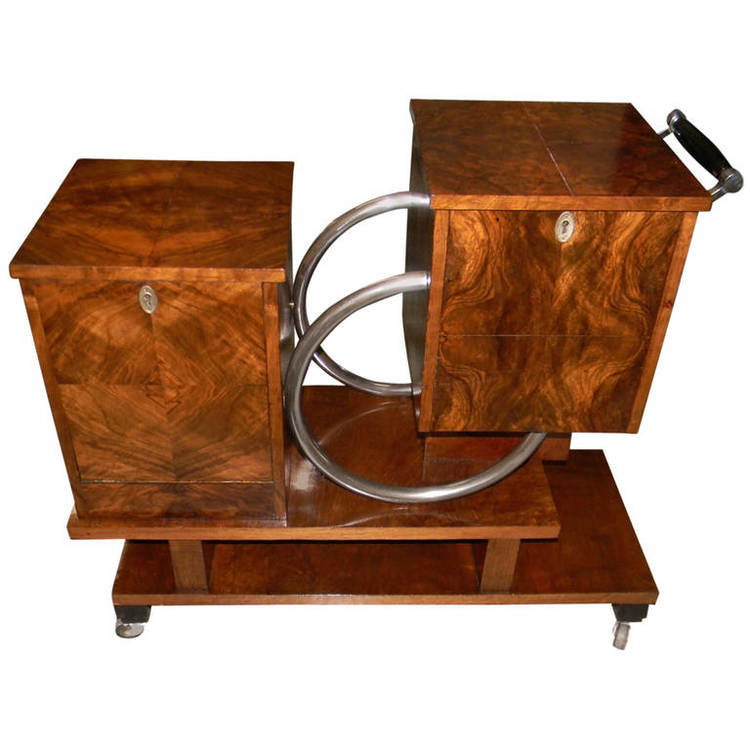From Nouveau to Deco : Art Deco Furniture- Research
Oh, the 1920’s, flapper dresses, jazz music and a rising culture of consumerism. But it’s fine, the economy is great and it’ll continue to be great (yikes), so what could possibly go wrong? The appropriately named Roaring Twenties was characterized by a newfound interest and appreciation for all the luxurious.From washing machines, to cars, nothing escaped a glamorous face lift,including furniture.
Art Deco was the furniture of the fashion, and reflected the culture’s demand for luxury. In its most distilled form, Art Deco was a fusion of luxury, sophistication (arguable I suppose) and practicality. While is pre-descor, Art Nouveau was a reaction to Industrialization aggressive emphasize on practicality over beauty, characterized as a being purely decorative. Art Deco represents a fusion between the two, beauty and practicality melded together.
Materials
Bold, glamorous and luxurious (perhaps even pushing the line between glamorous and gaudy for some). Naturally, furniture designers emulated the glamorous and luxurious tendencies of the time by choosing unconventional materials. The look of the time particularly favoured all the “exotic” as well as materials with smooth, gleaming surfaces. For example, mirrored furniture was rather common ( this would include coffee tables, and dressing and vanity mirrors).

Exotic woods were also a very popular choice, and the rarer the better. The trends in woods used changed with availability and tastes, but included zebra wood, macassar ebony, violet wood and amborugna burl. Woods would often be coated with lacquer ( a liquid which drys as a sort of polish which is meant to protect wood) as it created a rich, glamorous appearance. The cheaper the wood used (maple, oak and ash would be examples of this) the more of the coating would be applied to compensate for the poorer quality of the wood.

Leather has always been indicative of luxury and wealth, a trait which made it one of the perfect materials for art deco furniture. Armchairs, ottomans and sofas were commonly made out of leather, mostly in black, tan and brown colours. However, many designers would add a splash of colour with their leather. Dyed leather which came in variety of colours (for example, cherry red and tangerine orange) did make their way into people’s homes.

Additionally, the Age of the Machine which occurred in the 1920’s made metal as a material much more available, as factories could begin to churn it out. It was utilized in furniture to create an almost futuristic appearance, however it was mostly relegated to an accent on the furniture.
Motifs
Although Art Deco didn’t employ as many adornments as its late cousin Art Nouveau, they were still implemented enough for there to be a cohesive, recognizable style. The form of furniture was often designed with streamlined, linear lines (a very good complement to the wood they’d often choose to make their furniture with, as it would harmonize with the natural pattern of the wood).

Perhaps the most recognizable motif employed by art deco are geometric shapes. Particularly zigzags or chevrons (which are upside down v shapes).
Adornments
In general it is safe to say that Art Deco generally put form over adornment (quite the opposite of Art Nouveau), however it was the 1920’s. Which meant that . Designers would embellish their furniture with other luxury items such as quartzs and jewels (jades, onyxes, ivory and murano glass were all popular choices)
Inlays were another popular method for designers to elevate the luxury of their products. Essential they were “designs made by setting pieces of a substance like ivory, brass or mother pearl within a large surface.” This is most commonly seen in sofas and armchairs which originate from the 1920’s.
Lecture Summary
This week we covered the years between 1925 and 1930, a cease from the war for Europe (which left countries in varying states of disarray). Germany in particularly faced devastating consequences thanks to the war (specifically the treaty of Versailles), and created a catalyst for change (although this absolutely laid the foundation for many atrocities which would be committed). One of the few positive changes which Germany would temporarily enjoy was the work done by the Das Staatliche Bauhaus (which was created when the two german schools, Weimar Arts & Crafts school and Weimar Art Academy merged together). With Walter Gropius (a member of the German Labour League) appointed as the director, the school’s goal was to ““breathe a soul into the dead product of the machine.” And so they did, creating many innovative works (book design, paintings, posters, and even a ballet!). One major achievement from the school was the work by, Johannes Itten a professor of the Bauhaus whose colour theory which is still taught in schools today. Additionally, the work of the Bauhaus influenced others such as Jan Tschichold (who saw their exhibition in 1923) who went on to be a huge influence on typography (going as far to claim that he was the greatest influence on type in the 20th century).
Photo Credit
(for photos not credited in the captions, in order)
*https://www.antiquesatlas.com/antique/art_deco_leather_armchair_vintage_club_easy_chair_/as272a1210
* https://www.1stdibs.com/furniture/seating/lounge-chairs/style/art-deco/
Sources
* https://www.carrocel.com/recognizing-and-appreciating-the-art-deco-style-of-furniture/
*http://artdecostyle.ca/art-deco-style-blog/art-deco-furniture
*https://www.1stdibs.com/collections/art-deco/
*https://study.com/academy/lesson/art-deco-furniture-history-style.html
*http://artdecostyle.ca/art-deco-style-blog/art-deco-definition